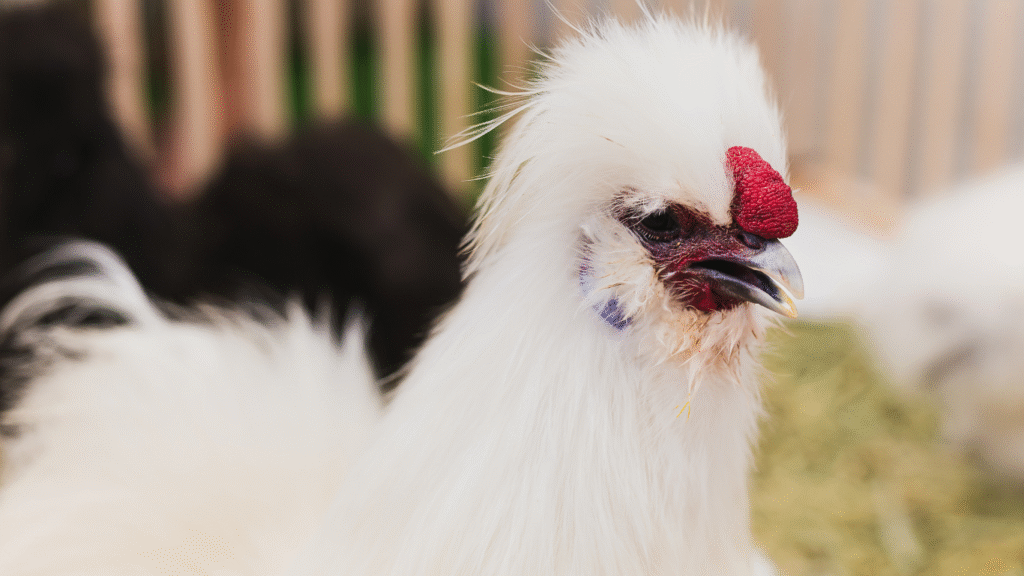Among the wide variety of backyard poultry breeds, the satin chicken stands out for its rare beauty and charming personality. Known for its silky, satin-like feathers, this breed is often mistaken for the Silkie, yet it has its own unique identity. The satin chicken is not just about good looks; it is also a hardy, friendly, and versatile bird that appeals to both beginner and experienced chicken keepers.
The satin chicken is essentially a feather type variation that originated from selective breeding of Silkies. Unlike the soft, fluffy Silkie feathers that look almost fur-like, the satin chicken has a smoother and shinier plumage that gleams under sunlight. This makes them an attractive addition to any backyard flock, especially for those who enjoy raising ornamental poultry.
Apart from their appearance, satin chickens are admired for their calm and docile temperament. They adapt well to family environments, making them excellent pets for children and families. Their gentle nature also means they can easily get along with other breeds in a mixed flock. With proper care, they can be a source of joy and comfort while also producing small but consistent eggs.
In the following sections, we will explore the history, physical traits, care needs, and benefits of keeping satin chickens so that you can decide if this breed is the right choice for your flock.
Origin and History of Satin Chickens
The satin chicken is not an ancient breed with centuries of history, but rather a modern development that emerged through careful breeding. It originated as a result of crossing the much-loved Silkie with other breeds that carry smooth feather genetics. The goal was to maintain the charm and personality of the Silkie while producing a bird with shiny, satin-like feathers instead of the traditional fluffy look.
These chickens are often categorized as a project or exhibition breed, and they are still gaining recognition among poultry enthusiasts. They are not officially recognized in all poultry standards, which means you may not see them in every show. However, their popularity continues to grow, especially in the United States, the United Kingdom, and Australia, where backyard chicken keeping has become a beloved hobby.
While their development may be recent, satin chickens have already earned a reputation as beautiful ornamental birds. Breeders are working to standardize the breed further, with the hope of making it an officially recognized variety in poultry associations in the future.
Their unique feather type and resemblance to Silkies often cause confusion, but with increasing awareness, more chicken enthusiasts now recognize the satin as a distinct variety worth raising. Their story is a testament to how selective breeding can create new and exciting options for chicken keepers.
Appearance and Characteristics of Satin Chickens
The most striking feature of the satin chicken is its feather type. Unlike the fluffy, cotton-like feathers of the Silkie, the satin chicken has smooth, glossy feathers that shine in the light, almost resembling satin fabric. This gives them a more polished and elegant look, while still retaining a certain softness.
Satin chickens come in a wide range of colors, including black, blue, splash, partridge, and white. Each bird’s plumage reflects light differently, making them particularly eye-catching in a mixed flock. Their feathers are not just beautiful but also durable compared to Silkie feathers, which tend to attract dirt and require extra grooming.
Physically, satin chickens are small to medium in size, similar to Silkies. They typically weigh between 1.5 to 3 pounds, making them a bantam breed. They have dark skin, a walnut-shaped comb, and five toes on each foot, which are all inherited from their Silkie ancestry. Some may even have crests and feathered legs, adding to their unique appeal.
Personality-wise, satin chickens are gentle, curious, and affectionate. They enjoy human interaction and can be easily tamed with regular handling. Their calm nature makes them less likely to fight with other flock members, which is why they are a good choice for families and beginner chicken keepers.
Care and Management of Satin Chickens
Raising satin chickens is relatively simple, especially if you are already familiar with keeping Silkies or other bantam breeds. They are not demanding, but like all chickens, they need proper housing, nutrition, and care to thrive.
Housing and Environment
Satin chickens are small and vulnerable, so they require a secure coop to protect them from predators. The coop should be well-ventilated, dry, and spacious enough to prevent overcrowding. Because of their feather type, they do better in clean conditions, as wet or muddy environments can damage their plumage.
Feeding
A balanced poultry feed that contains the right mix of protein, vitamins, and minerals is essential. You can also provide occasional treats such as vegetables, fruits, and grains, but these should be given in moderation. Fresh water should always be available.
Health and Grooming
Satin chickens are generally hardy but can be prone to parasites like mites and lice. Regular cleaning of the coop and dust baths can help prevent infestations. Unlike Silkies, satin feathers are easier to maintain, but they still benefit from occasional checks to ensure their plumage remains clean and healthy.
With the right environment and care, satin chickens can live for 6 to 8 years or even longer, making them a lasting and rewarding addition to your flock.
Benefits of Raising Satin Chickens
There are many reasons why chicken keepers choose satin chickens. Their benefits go beyond just their stunning looks.
Friendly nature: Satin chickens are calm, gentle, and affectionate, which makes them perfect family pets. They are especially good with children, as they are less aggressive than some other breeds.
Egg production: While they are not the most productive layers, satin chickens can provide a steady supply of small to medium cream-colored eggs. On average, they lay 100 to 120 eggs per year.
Ornamental appeal: Their shiny feathers and wide range of colors make them stand out in any backyard. Many people keep them primarily for their beauty and to participate in poultry shows.
Low maintenance: Compared to Silkies, satin chickens are easier to groom and maintain, as their feathers are less prone to matting and dirt.
Companionship: Beyond practical benefits, satin chickens are affectionate creatures that bring joy and relaxation to their keepers.
Whether you are a hobbyist looking to expand your flock or a beginner searching for a family-friendly breed, satin chickens are a wonderful option.
FAQs about Satin Chickens
Q1: Are satin chickens the same as Silkies?
No. While satin chickens are closely related to Silkies, they have smooth, shiny feathers instead of fluffy ones.
Q2: Do satin chickens lay eggs?
Yes. Satin chickens lay around 100 to 120 small to medium eggs each year, though they are not considered heavy layers.
Q3: Can satin chickens live with other breeds?
Yes. Their gentle temperament makes them easy to integrate into a mixed flock.
Q4: How long do satin chickens live?
With proper care, satin chickens can live 6 to 8 years or longer.
Q5: Are satin chickens good for beginners?
Yes. Their calm nature and relatively low maintenance needs make them suitable for beginner chicken keepers.



